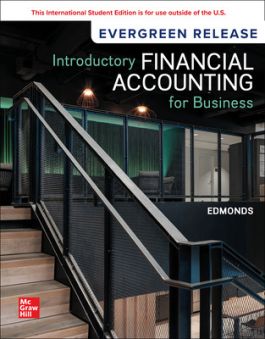Introductory Financial Accounting for Business: 2024 Release ISE
- Note: the eBook does not include access to Connect
- Access the eBook anytime, anywhere: online or offline
- Create notes, flashcards and make annotations while you study
- Full searchable content: quickly find the answers you are looking for
1 An Introduction to Accounting
2 Accounting for Accruals and Deferrals
3 The Double-Entry Accounting System
4 Accounting for Merchandising Businesses
5 Accounting for Inventories
6 Internal Control and Accounting for Cash
7 Accounting for Receivables
8 Accounting for Long-Term Operational Assets
9 Accounting for Current Liabilities and Payroll
10 Accounting for Long-Term Debt
11 Proprietorships, Partnerships, and Corporations
12 Statement of Cash Flows
13 Financial Statement Analysis (Available online in Connect)
Appendix A: Accessing the EDGAR Database Using the Internet
Appendix B: Portion of the Form 10-K for Target Corporation
Appendix C: Summary of Financial Ratios
Appendix D: Annual Report and Financial Statement Analysis Projects
Appendix E: Accounting for Investment Securities
Appendix F: Time Value of Money
Appendix G: Big Data and Data Visualizations Overview

